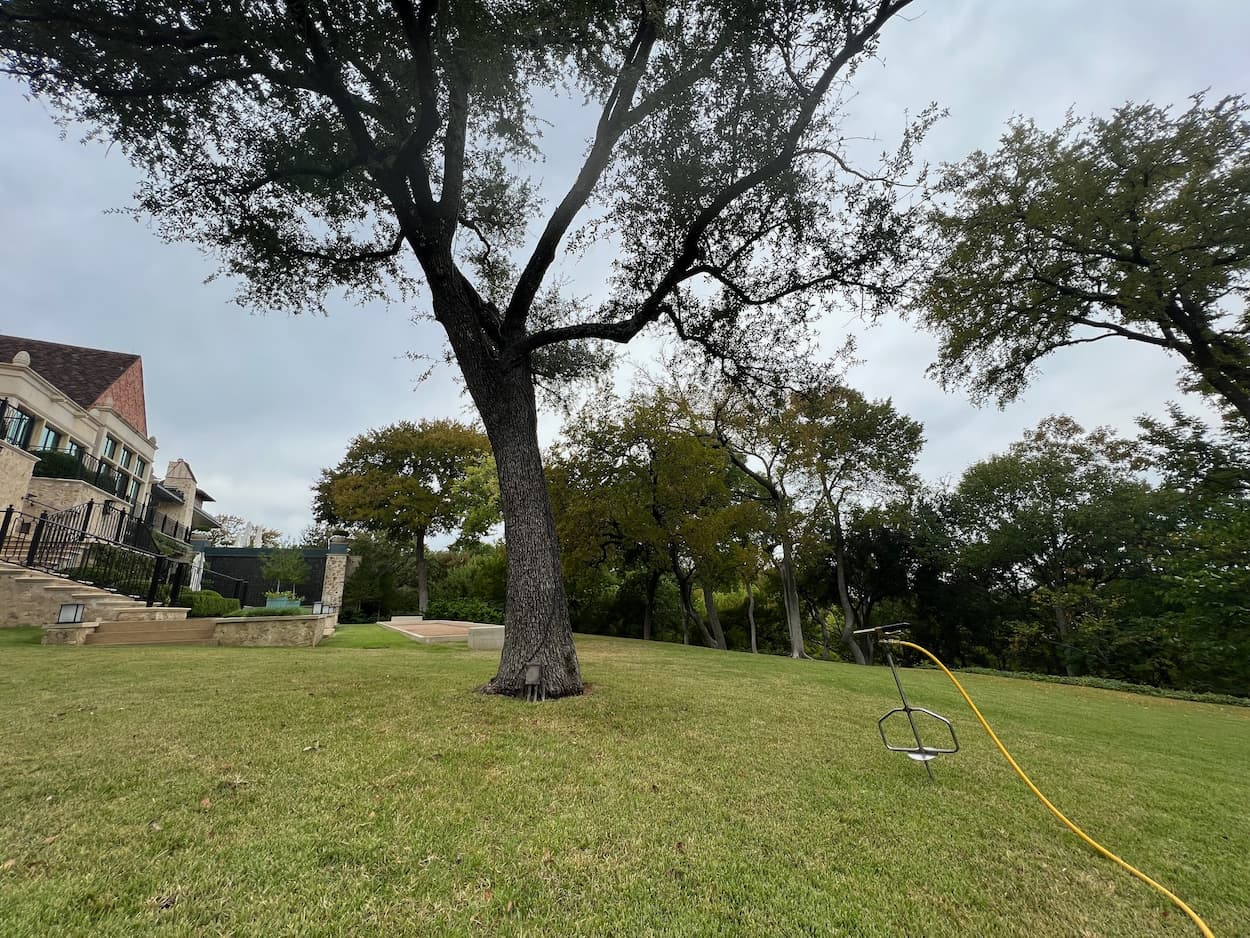Texas Shrubs & Tree Health Care Experts
Caring For Texas Shrubs & Trees Since 1990 Get A Free QuoteCall (817) 880-6130Tree & Shrub Pest Treatment Services in Aubrey, TX
Our ISA Certified Arborist Can Help Treat Your Trees and Shrubs From Pests in Aubrey, TX.
Arborist USA provides Tree & Shrub Pest Treatment Services in Aubrey, Texas, and the surrounding areas.
Aubrey, Texas, is a town that cherishes its rich vegetation – a testament to its dedicative tree and shrub pest treatment programs. It has adopted a comprehensive strategy that balances efficient pest management with environmental awareness.
In conclusion, Aubrey’s all-inclusive and environmentally sensitive pest control approach sets it apart from other towns. Its dedication to addressing pest issues while promoting local biodiversity firmly establishes Aubrey, Texas, as a leader in sustainable pest management practices. It demonstrates that it is indeed possible to strike a balance between efficient pest control and ecological preservation – a commendable testament to Aubrey’s commitment to the environment.
If you are in need of Tree & Shrub Pest Treatment Services in Aubrey, TX, please get in touch with Arborist USA today by calling us at (817) 880-6130, your Tree & Shrub Disease Specialist.
Signs of a Sick Tree or Sick Shrub
- Dead Branches
- Yellowing Leaves
- Fungi or Decay
- Bark Falling Off
- Discolored or Rusted Leaves
- Dying Tree or Shrub
- Leaf Discoloration
- Root or Insect Damage
- Leaves look like they’re being eaten
- Bark is Peeling
- Holes in leaves
- Holes on Bark or Branches
- Stunted Growth
- Canopy Dieback
- Bark Abnormalities
- Wilting
Tree & Shrub Helpful Tips
1. Common Pests:
Trees and shrubs in Aubrey frequently fall victim to pests such as beetles, aphids, scale insects, borers, and caterpillars. Initiating effective treatments as soon as these pests are identified can help mitigate the risk of spread and irreversible damage.
2. Quick Identification:
Prompt detection is a priority for Aubrey’s strategy. By employing advanced monitoring systems, the local team can identify potential pest infestations at the earliest stage. This proactive approach ensures pests are controlled before they can wreak significant harm on plant life.
3. Organic Pest Control:
Aubrey has also championed organic pest control strategies, involving the use of beneficial insects that naturally keep pest populations at bay. This reduces the community’s reliance on chemical insecticides, rendering the process more ecologically friendly.
4. Systemic Insecticides:
When systemic insecticides are needed, sparing and strategic application is important to avoid unnecessary harm to the wider ecosystem. This focus on targeted treatment controls pests while minimizing the disturbance to non-target species.
5. Biological Control:
Aubrey also incorporates biological control methods, deploying local predator species to naturally curb pest proliferation. This tactic not only addresses the pest issue but also maintains the natural equilibrium of the ecosystem.
6. Preventive Measures:
The city places great emphasis on preventative measures as well. Regular wellness checks for trees and shrubs, strategic pruning techniques, and informed watering practices fortify plant health and deter pest infestations.
7. Treatment Resistance:
In a bid to prevent pests from developing resistance to treatments, Aubrey periodically amends its pest control methods. This smart tactic keeps the pests constantly challenged and boosts the longevity of the treatment plans.
8. Seeking an Arborist:
Furthermore, the input of certified arborists and experienced pest control experts plays a crucial role in enhancing Aubrey’s proactive pest management program. Their expertise ensures the health of the town’s plant life, as well as the successful conservation of the ecosystem.
If you’re concerned or have any further questions about our Tree & Shrub Pest Treatment Services in Aubrey, TX, or surrounding areas in North Texas, please call us at (817) 880-6130.
Tree & Shrub Pests
Listed below are common Tree & Shrub Pests found in Texas.
Aphids
A white soft body insect that creates a sticky "honey dew" structure on limbs or leaves, blocking nutrients.
Bagworms
Bagworms lay eggs that create small cone-shaped structures less than three inches in length.
Beetles
An invasive wood borer that is subject in all wood tissue that causes severe decline in trees health.
Gypsy Moth
A larva that boars into leaf structure that cause lesser of a foliation and decline in overall leaf structure.
Oak Gall
A growth deformity known as a "gall" commonly occur on oak trees subject to branches and other structures.
Termites
Termites, wood-destroying insect, eats away at all wood tissue, damaging the structures of the trees.
Twig Girdlers
Being a member of the long-horned beetle family, these girdlers are known to eat leaf and other tree areas.
Webworms
These caterpillars spin white webbing bag nests in tree branches and eat your tree foliage (leaves).
Certifications




Our Reviews

A+ BBB Rating based on 31 BBB Reviews
4.8/5.0 based on 83 Top Rated Local Reviews
4.6/5.0 based on 36 Facebook Reviews
4.0/5.0 based on 4 Trust Pilot Reviews

4.9/5.0 based on 90 Google Reviews
4.5/5.0 based on 13 Yelp Reviews
29 Recommendations on Nextdoor
Total Reviews: 286 ![]() Real Customer Reviews
Real Customer Reviews







